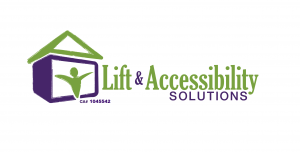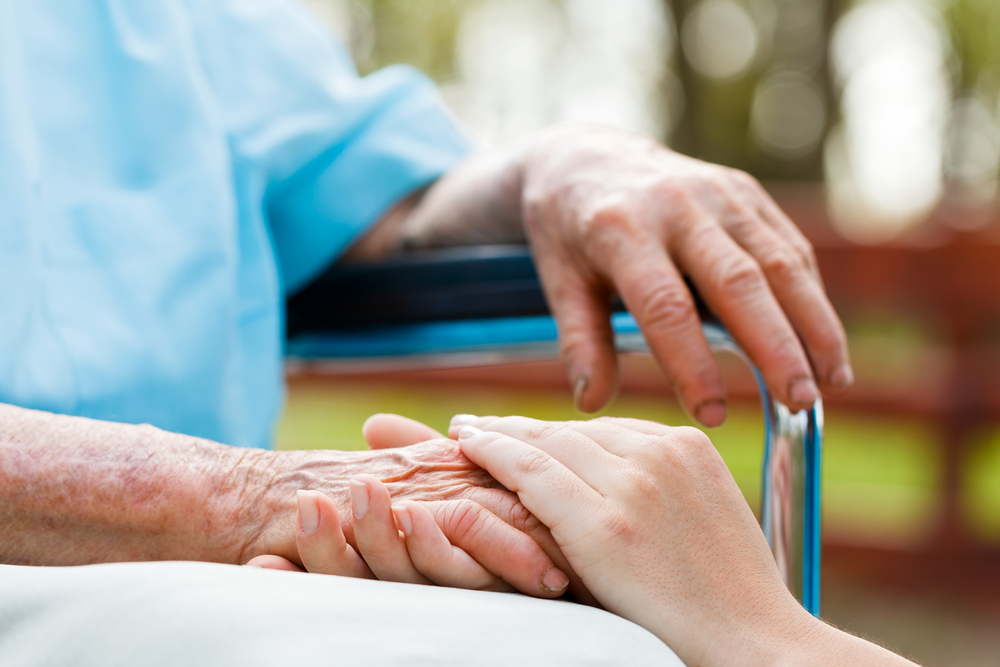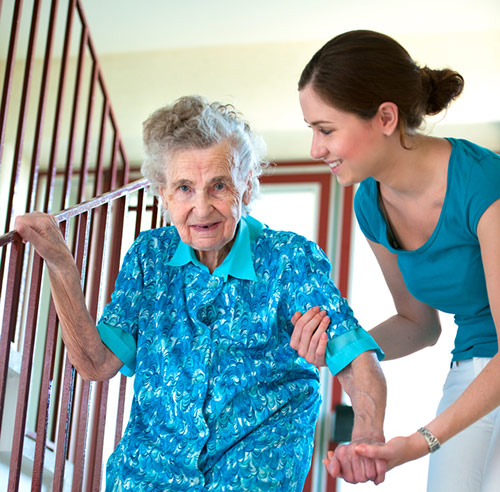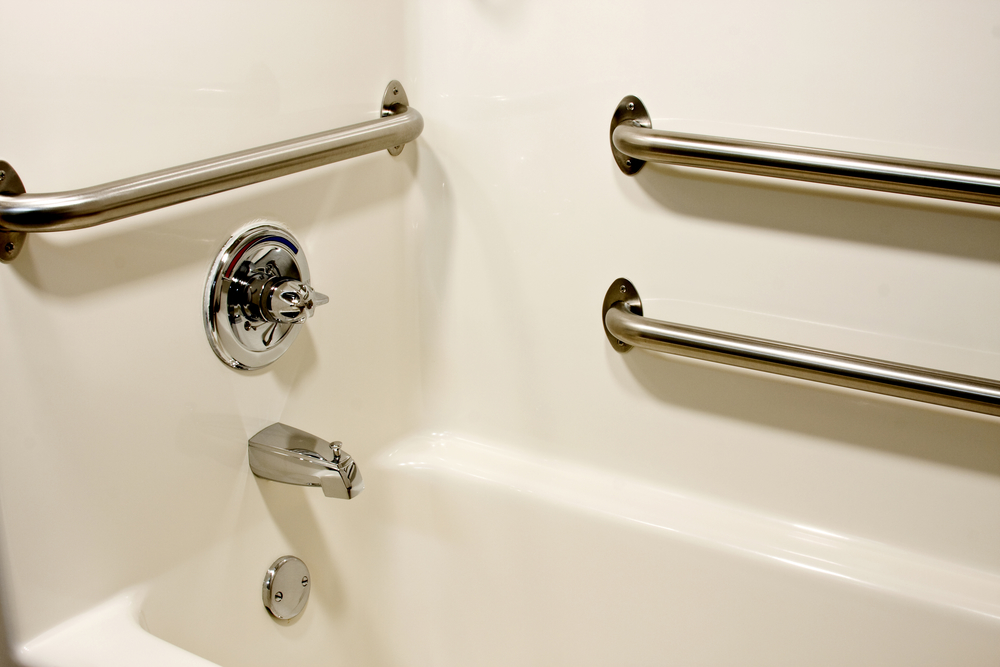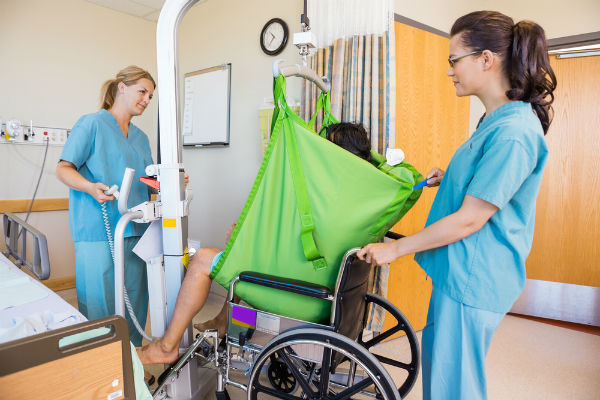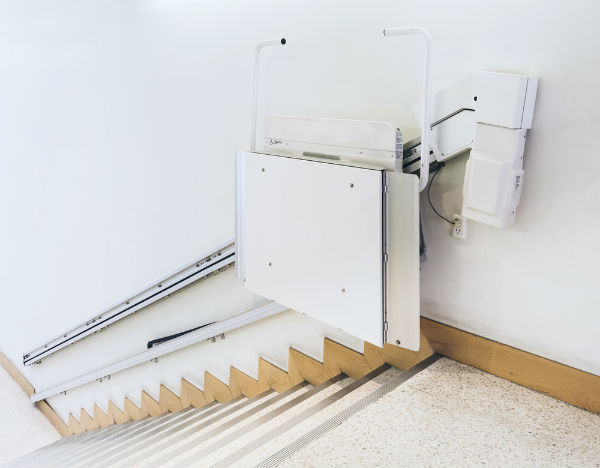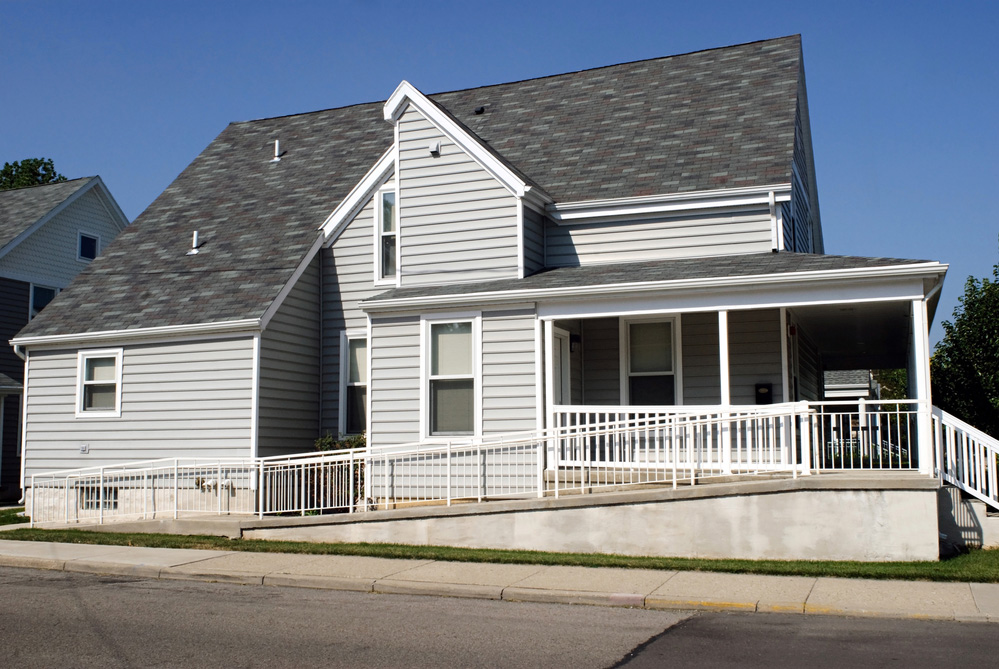03 Oct / 2016
5 Tips to Care for the Senior in Your Life
Growing old can be difficult. Most people acknowledge that, whether they personally know someone who is considered a “senior citizen” or not. Seniors are generally considered people over 65, although the definition varies broadly depending upon health and independence levels. Some seniors can live completely on their own, while others may need assisted living or other forms of care. Whether it’s a parent, grandparent, aunt, uncle, friend, mentor or anyone else, you feel close to this person and want to help them as much as possible while maintaining their autonomy.
If you have a senior citizen that you care about in your life, it’s important to know how to care for them as they grow older. Here are a few tips that you can use to guide you through the process:
1. Treat your senior loved one with respect.
Seniors have decades of life experience that they are ready and willing to share with you (much more than you have yourself, most likely). Respect that they are individual people with their own stories, and avoid patronizing or coddling them.
2. Remain cognizant of their real limits.
Just because someone is a senior citizen you should not assume that they are ill, disabled or otherwise unable to care for themselves. In fact, many senior citizens remain in perfectly good health, or at least enough to live autonomously and maintain normal relationships.
Do recognize that seniors face many challenges that younger people do not. For example, they may not be able to be as active as you would like them to be, a limitation that results from the natural aging process as well as age-related illnesses. This can be especially difficult to deal with if you have developed a relationship with this person that revolves around some sort of physical activity, such as running together or lifting weights. Try not to be discouraged if they are not able to do as much as before. Look for other activities you can do together – such as taking walks or bird-watching, for example.
3. Make it a priority to stay connected.
One of the most important things you can do to care for a senior citizen is to talk to them. Tell them about your life, and don’t let yourself become distant. They want to hear from you and stay in touch.
20 Aug / 2016
Is it Time for a Residential Stairlift?
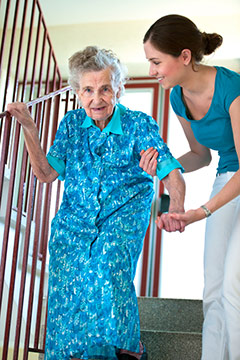 As you get older, it is natural for you to find it a little harder to get around your house on your own. Whether your knees and back ache, or you just don’t have quite the same spring in your step that you used to, getting from point A to point B can become challenging with as each year passes. However, do not believe that less mobility automatically means less independence. Many seniors maintain a safe and independent lifestyle with various home health aids for many years in their own homes. One of the greatest challenges for seniors, climbing stairs, has the elegant solution in San Francisco, CA called the stairlift. In use in homes since the 1930s, a stairlift can make a tremendous difference in managing your own mobility and allowing you to remain independent for years to come. Let’s look at some potential issues you may be experiencing that will help you decide if a stairlift is right for you.
As you get older, it is natural for you to find it a little harder to get around your house on your own. Whether your knees and back ache, or you just don’t have quite the same spring in your step that you used to, getting from point A to point B can become challenging with as each year passes. However, do not believe that less mobility automatically means less independence. Many seniors maintain a safe and independent lifestyle with various home health aids for many years in their own homes. One of the greatest challenges for seniors, climbing stairs, has the elegant solution in San Francisco, CA called the stairlift. In use in homes since the 1930s, a stairlift can make a tremendous difference in managing your own mobility and allowing you to remain independent for years to come. Let’s look at some potential issues you may be experiencing that will help you decide if a stairlift is right for you.
Do You Fear Falling Down the Stairs?
Seniors often find it difficult to maintain their balance while walking even short distances, or when rising from a seated position. Add to that instability the change in elevation and coordination required to ascend or descend a staircase, and it can become a pretty frightening situation. If you fear that you are going to fall when going up or down a staircase, even when your hand is on the railing, it may be time to consider a stairlift for your home.
Do You Have Aches and Pains in Your Legs or Feet?
There are many reasons beyond old age that can cause aches and pains in your lower extremities: diabetic nerve pain, arthritis, degradation of joints and ligaments, or loss of bone/muscle mass. Regardless of the cause, this pain can make going up and down stairs a painful process, and in some cases absolute agony. If you are experiencing discomfort when climbing stairs to the point that it is limiting your independence, consider getting a quote for a stairlift. No one should suffer to move around their home.
Are You Unable to Access Certain Areas of Your Home?
When you live independently, you need to be able to get to every room in your house without human assistance. If your bedroom, bathroom, or other important room is not accessible to you at any time throughout your day because of a lack of mobility, pain in your extremities, or a lack of energy, it is time to consider installing an assistive device such as a stairlift. You don’t have to sacrifice your independent lifestyle just because moving around has become more difficult.
If any of these conditions apply to you, consult a local medical equipment provider about getting a quote for installing a stairlift in your home. Give yourself the gift of freedom and independence, and continue living your life on your terms.
Wheelchair lifts should strongly be considered for installation when designing your home if you have any family members or friends who are either currently in a wheelchair, or may have difficulty climbing stairs. Businesses should also consider installing lifts for accessibility versus ramps or elevators. Lifts are cheaper than installing elevators and are visually more appealing than ramps.
What is a Wheelchair Lift?
A wheelchair lift is a mechanical platform designed to raise and lower, allowing an individual to enter or exit residences, businesses, and vehicles. These lifts are fairly customizable to your needs, and are similar to elevators, however the car is usually open and it takes constant pressure on the control button to operate the lift. Because the car is open, lifts can be installed indoors or outdoors, which makes your desired destination easily attainable.
Is a Wheelchair Lift a Good Idea for Your Home or Business?
If you use a wheelchair, moving freely around your house can be difficult and usually requires assistance when you want to get to a different level. Installing vertical lifts gives you freedom of mobility and helps you gain your independence. These lifts can be installed wherever there are stairs and can even be installed outside if you have a raised deck or porch. They are cost-effective, which makes them a cheaper alternative than an elevator, and they take up less space than ramps; wheelchair lifts are convenient and compact, offering more living space after installation than ramps would. Also, they require little renovation for your home. In addition, lifts provide a safe, smooth ride without having to leave your chair.
Wheelchair lifts are great options for churches, schools, group homes, and other small businesses to consider for easy accessibility for those who have trouble using stairs. As mentioned before, they are more affordable and require little renovation if you want to install one later on. Typically, lifts can reach heights of 14 feet and carry 750 pounds of weight. So how do you know if a lift is the right option? Well, if there isn’t enough room at the entrance for a ramp, lifts will work better since they take up less space. If your organization or business has a deck or stairs to gain access to the building, chances are you will need some form of wheelchair accessibility. Plus, if the building doesn’t have an elevator, and you need to carry heavy items from floor to floor, lifts come in handy.
04 Aug / 2016
3 Types of Grab Bars for Your Home and Their Benefits
As people age, they may start to need assistance in getting around in everyday life. There are many ways to ensure these individuals have the help they need and can move about on their own with dignity. Particularly if you are caring for an aging parent in your home, it is wise to consider installing grab bars in trouble areas. A few trouble areas to consider are mainly the bathtub, toilet, shower areas, as well as bedsides. The reasons and benefits of why you should install grab bars are pretty straightforward and obvious: safety, safety, safety. Here are a few different types of grab bars and their benefits to you or your family member in need.
A Vertical Pull Grab Bar
This particular grab bar is great for multiple locations, including bedroom, bathroom, and living room. It usually comes as an adjustable length bar and often has a curved grab bar attached at a perpendicular angle. This curved grab bar is either fixed or is adjustable as well to suit varying heights of users. This bar is great for helping people to pull themselves up from a seated position. Additionally, this bar is great if you live in an apartment which won’t allow you install permanent fixtures. The vertical grab bar usually features rubber stoppers on both ends. When you adjust it to the proper height to fit the space, it should fit snugly and securely against floor and ceiling.
A Horizontal Grab Bar
This is probably the most common type of grab bar which people choose to install to assist limited-mobility family members. They can easily be installed just about anywhere they are needed. A horizontal grab bar provides a stable spot for someone to reach for. Never install a grab bar at an angle. This is especially true if you are installing the bar in a wet environment, like the bathtub or shower. “Slippery when wet” comes to mind; if the bar is at an angle and is wet, the likelihood someone will slip increases dramatically. Their hand is much more likely to slide or slip if the angled bar gets wet. Install the bar either completely horizontally or completely vertically. There are permanent, metal horizontal grab bars which you can install. Also, you might need to consider a temporary suction cup bar. Maintain extra caution with these “temporary” grab bars. The suctions cups don’t always remain suctioned to their surface and can fall! But if you live in an apartment which absolutely refuses to let you install anything permanent, these are better than nothing.
Clamp-on Safety Bar
This type of safety bar is especially good to consider if, again, you live someplace that will not allow you to install a permanent solution. This grab bar features dial down clamps that securely grip the edge of the bathtub. Then an adjustable clamp bar (typically in an upside down U shape) extends vertically to your preferred height to provide a grip. This is a great, non-permanent solution to provide someone a little extra help getting in and out of their bath safely.
28 Jul / 2016
Reasons to Consider an Overhead Lift
An overhead lift is a motorized lift that can be used in the home in order to transfer a person from one place to another, or simply be re-positioned with the assistance of an overhead track. These tracks can either be self-standing, making them portable, or they can be mounted on the ceiling of any room throughout the house. A sling is used in order to move the person from place to place or to make themselves more comfortable where they are. The patient is transferred in an up and down motion and can manually be moved from one side to another.
*
After realizing how valuable these lifts were in assisting hospital staffs, they are now available for use at home, although a lot of people in need are unaware of their availability. Ceiling lifts make it possible for patients to be in the comforts of their own home instead of having to spend additional time in either a hospital or after care facility. The strain that is often experienced by a caregiver is greatly reduced with the use of an overhead lift and makes it easier to move the patient from place to place.
*
Because of the fact that specific needs differ from one patient to the next, an assessment should be completed on the person in need before the purchase of an overhead lift to make sure they are getting a model that will be of benefit for their individual purposes. Different makes and models of overhead lifts differ in the capabilities and features that are offered. This need to be taken into consideration in regards to the needs of the patient.
*
The type of sling used with the lift should match the needs of the person it will be used for. You will also want to keep in mind what the lift will be used for when choosing a sling. If the main purpose of the lift is helping the patient readjust or change their position while in bed, you might need the same type of sling intended for helping someone who specifically needs assistance with access to and from a bathroom. This is something you might discuss with a nurse or other health care provider in order to make sure the proper sling is being used.
*
You will want to select an overhead lift model that includes an over speed governor to be sure that the lift is not being raised or lowered at unsafe speeds. An emergency lowering system is another feature that adds to the safety of the lift.
20 Jul / 2016
What Housing Grants Are Available for Disabled Veterans?
You served your country well. You believed it was your duty. You did your duty to the best of your ability. Unfortunately, because of injuries received while in service to your country, you are now disabled. Your family has been loving and supportive as you’ve tried to adjust to your disability.
During your recovery, you have overcome many obstacles; the one obstacle you aren’t able to overcome is your home. It wasn’t designed for a person with your disabilities. The renovations that are required to make your home totally accessible to you are much too expensive. You need help. Have you looked at Housing Grants for Disabled Veterans available through the U.S. Department of Veterans Affairs? Here is a quick look at the programs available to you.
There are two types of grants available to the disabled veteran: the Specially Adapted Housing Grant (SAH), and the Special Housing Adaptation Grant (SHA). Here’s a breakdown of each program.
Specially Adapted Housing Grant (SAH)
The SAH is designed for the more severely disabled veteran. The major disability criteria for SAH include:
● Loss of or loss of use of both legs, OR both arms
● Blindness in both eyes with only light perception, in addition to loss of or loss of use of one leg
● The loss of or loss of use of one leg together with the loss of or loss of use of one arm, OR
● Severe burns, OR
● The loss, or loss of use of one or both lower extremities, occurring on or after September 11, 2001, which requires the constant use of braces, crutches, canes, or a wheelchair.
The SAH Grant can be used in the following ways:
● Constructing a specially designed home on land to be acquired
● To build a home on land already owned
● Remodel an existing home, if adaptable
● The grant can also be applied against the unpaid principal mortgage balance of an adapted home purchased without the assistance of a VA grant.
Special Housing Adaptation Grant (SHA)
SHA is available for disabled veterans who need fewer modifications to remain in their home, or purchase an already specially adapted home. The criteria for SHA are:
● Vision loss in both eyes resulting in less than 20/200 visual acuity, OR
● Loss of or loss of use of both hands, OR
● Severe burn injuries, OR
● Severe respiratory injuries
SHA grants can be used for the following:
● Adapt the home of the Veteran or a family member, if already owned by the Veteran
● Adapt a home being purchased where the Veteran will live
● Help a Veteran purchase a home previously adapted in which the Veteran will live
For each program, the funds are available in varying amounts, and can be used a total of three times for the maximum amount available.
For those with questions about each of these programs, you can contact a Specially Adapted Housing staff member. The e-mail address is: sahinfo.vbaco@va.gov, or contact by phone at: (877) 827-3702.
As a disabled veteran, you’ve given so much to keep your country safe. Now it’s our turn to help you. If you’re in need of help due to a combat-related disability, please contact us today.
13 Jul / 2016
What is the Difference Between Home Elevators and Lifts
What is the Difference Between Home Elevators and Lifts
If you are interested in installing either an elevator or lift into your home, it is important to spend some time weighing the pros and cons of each. Factors such as cost, capability and ease of install, need to be a part of your decision. Keep these aspects in mind and choose the machine that is right for you.
Lifts
A lift, also known as a platform lift, is a powered device that is designed to raise an occupant, most often in a wheelchair or other assisted device, over a vertical barrier such as a high step or a flight of stairs. They are often installed in homes and businesses and are often found on public transportation vehicles, including public buses and trains as part of the requirements of the Americans with Disabilities Act.
In the home, platform lifts consist of a platform, the lift tower, and the controls needed to operate the device. Lifts can be restrictive in their capabilities as most are limited to around 12 feet of vertical travel. A residence will also need approximately six square feet of space to accommodate the lift. Lifts can be an incredible alternative to a ramp, which can take up much more space and have fewer capabilities
Elevators
Elevators are an alternate option. Residential elevators have the ability to reach at least two floors in your home. The construction involves installing a shaftway, which encloses the cab, and the machinery needed to manipulate elevator.
Elevators are ideal in homes where more than one person will need to access a higher floor simultaneously as elevators are capable of handling much more weight than a lift. The good thing about elevators is that they can be constructed in a variety of designs so they are an excellent choice for multi-floor transport.
Additional differences
If you are thinking of installing an elevator, there are several factors that you will need to understand so that you pick the proper option for your situation. When it comes to cost, lifts generally cost much less than elevators. Elevators also require more construction and equipment than your regular one person lift. On the positive side, elevators can have a sleek appearance and transport multiple individuals at once.
There is a lot of thought that goes into deciding whether an elevator or a lift is the right option for your San Francisco, CA home. Regardless of your choice, know that either option is an excellent fit for almost every home.
Your house is the place to be for family gatherings. There’s lots of space for the kids to run around, a beautiful deck for people to congregate, but some folks aren’t as young as they used to be. Even though your deck may be accessible to a majority of your guests, those steep steps may be like climbing a mountain to some of your older relatives. Without proper hand railings or assistance, these steps could cause serious falls. Since nobody is getting any younger, it is a good idea to install accessible decks and ramps at your home.
Safety First
If you have elderly members in your family, negotiating difficult pathways and hard-to-climb stairs can prove hazardous. Nobody wants to put a barbeque on hold due to a nasty spill. Therefore, creating accessible decks and landings should be installed. In order to evaluate your exact needs, you need to look at safety. How safe is your living space in its current state? What do you need to make everything safer and more accessible for the older folks in your family that may have difficulty walking, or are maybe even in a wheelchair? You should also consider developments that you may not need now, but are strong possibilities in the future. Once you have concluded everything you need to increase the safety of your home, you can begin planning your safety features.
Planning Safety Features
When designing your home, you don’t often think about what may be hazardous for those with limited mobility if it’s not something you have to deal with daily. Therefore, when you start planning new safety features for your home, consider these factors that impede those who have difficulties with movement:
Traction: Slippery or cluttered walkways, steps, and even ramps are daunting to those who already have limited mobility. Most of the time, elderly folks don’t pick their feet up when they walk, so if steps are too steep or if there is a lot of clutter in their paths, they can slip or fall. Installing non-slip treads improves traction and helps ensure proper footing. Not only that, but better traction will eliminate falls, trips, and slips.
Grip: Not having proper railings or handles can also keep aging family members from climbing stairs, even if it’s only a few steps. Installing grab bars and proper railings assist those with balance issues and limited mobility. If you can, try to install these helpful safety features on both sides in order to ensure that there will not be any falls. Since aging adults often have trouble bending their knees, having access to grab bars or proper railings increases stability and can help them climb taller stairs or even the few steps to your front door without extra assistance.
Remember these helpful tips when designing a more accessible home for your elderly friends and family members, and you won’t be sorry.
27 Jun / 2016
How To Protect Seniors From Summer Heat Hazards
After months of cold nights, rainy days and warm fireplaces, the summer season has finally emerged. This is the time to trade in our winter boots for sandals, shorts and t-shirts.
Summer is the season when we spend extra time outdoors, tending the garden, swimming, hiking or simply basking in the sunlight. For our senior citizens, the summer heat can be dangerous and even fatal. Here are a couple of tips for those looking to spend as much time outdoors during the next couple of hot months.
Time is of the essence in the summer heat.
Time is of the utmost importance for seniors in the summer. Although the summer is a great time for many to spend long hours outside, it is not wise for senior citizens. They must keep track of the time they spend outdoors in the sun. When outside, ensure that a sunscreen is applied to the body and also wear a hat to keep the body cool.
Dress for the weather.
It is also wise to wear breathable material and comfortable lightweight clothing while outside. Light colors and dry fit or cotton clothing can make a significant difference in regulating your body temperature.
Beware of hyperthermia. Hyperthermia is a dangerous condition that occurs when the body reaches temperatures above 104 degrees. Know the signs of hyperthermia, which are: nausea, vomiting, fainting and a change in behavior. When someone becomes agitated, confused or suddenly lethargic, they could be suffering from hyperthermia.
Limit caffeinated drinks.
Drink liquids that are low in caffeine and without diuretic effects. Also ensure that you drink plenty of water and drinks that help conserve the electrolyte balance in the body, such as Gatorade or Vitamin Water. This will prevent dehydration.
Protect your eyes.
Senior citizens are also susceptible to vision troubles especially in the summer, be sure to wear sunglasses when outside. This will also prevent headaches, eye fatigue and the penetration of harmful UV rays.
Consult with your doctor.
Before doing strenuous activities in the summer schedule an appointment with your doctor to keep health optimal in the stifling summer months. Maintaining a strong relationship with your doctor during the summer months is imperative to the health of senior citizens. Some medications react differently in the body when one is outside in extreme temperatures.
19 Jun / 2016
5 Reasons To Consider A Residential Elevator
Providing safety and convenience, a residential elevator is an accessible device which assists physically disabled people to move from floor to floor. Elevators are also beneficial for transporting bulky items and groceries. Most importantly, an elevator increases the quality of your lifestyle. Residential or home lifts usually take less space in comparison to stairs, and this option will aid you in saving space for other uses. Elevators require only little room. The elevator can be easily installed outside on an external wall, which would give an indoor entry to the users at every level. Elevators of residences would help in the prevention of accidents. Many times, people fall from stairs and injure themselves severely. To avoid these worse circumstances, elevators could be used by dwellers in their home.
- Functionality and Accessibility: One of the main reasons to install a residential elevator is that it significantly improves the accessibility to the upper levels of your home. This is particularly beneficial if you have older family members living in the home or if you have mobility problems. An elevator can eliminate the risk of falling down the stairs for family members and guests who might otherwise have a hard time climbing a staircase.
- Space-Saving Design: If you’re building a new multi-storied home, an elevator can help you save a considerable amount of space that might otherwise be reserved for a stairwell. In some cases, the elevator can be installed outside the home on an external wall, freeing up even more floor space inside your home for other features you want to include.
- Luxury: Residential elevators are seen as one of the symbols of luxury, which means your home will instantly be the envy of guests, friends, and neighbors after you have a residential elevator installed. And unlike some other status symbols, an elevator is practical and highly functional.
- Improve Safety: One of the most common ways people are hurt in the homes is from the staircase. A home elevator protects not only young children but also adults who are frail. There is virtually no risk to riding your residential elevator as compared to running up and down the stairs.
- Demonstrate Style: Since Marin residential elevators are becoming more affordable and available, many homeowners are looking into them to add a unique look to their property and also increase functionality. It can also help your homes price value by installing an elevator because this is a luxurious add-on.
